Unveiling Xiangji Ping Ancient Buildings: A Traveler’s Guide
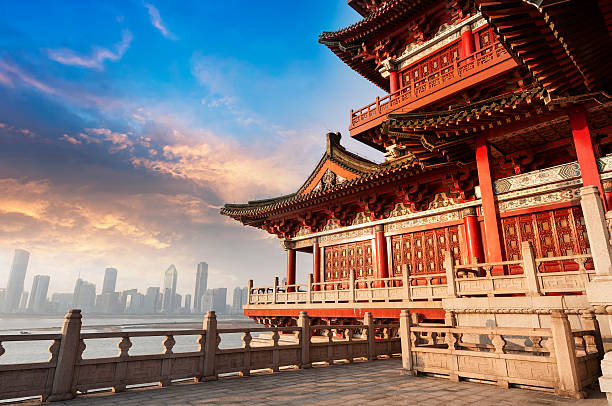
An Essential Guide to Visiting Xiangji Ping Ancient Buildings
In This Guide
- An Essential Guide to Visiting Xiangji Ping Ancient Buildings
- The Rich History and Legends of Xiangji Ping Ancient Buildings
- Main Highlights: What You Absolutely Can’t Miss
- Planning Your Visit: A Practical Guide
- Tickets: Prices, Booking, and Tips
- How to Get There: A Complete Transportation Guide
- Local Cuisine and Accommodation Nearby
- Frequently Asked Questions
- Final Thoughts on Your Trip
Visiting the ancient structures of Xiangji Ping is like stepping into a time capsule that transports you deep into China’s rich historical tapestry. Nestled within the picturesque landscape of Pingyao, these ancient buildings—many of which date back to the Ming and Qing dynasties—serve as a testament to the architectural prowess and cultural significance of their time.
As you wander through the narrow, winding streets, the well-preserved brick courtyard houses and ornate temples whisper stories of a bygone era. Just beyond the formidable city walls, which have stood guard over this historic site since the 14th century, lies a treasure trove of cultural artifacts and landmarks. The Xiangji Ping Ancient Buildings are not merely relics; they are vibrant reminders of Pingyao’s past as one of China’s financial hubs, where commerce thrived and traditions flourished.
This guide aims to help you navigate the enchanting labyrinth of Xiangji Ping, providing you with insights into its most significant structures, practical tips for your visit, and a deeper understanding of the profound history embedded within these walls. From the bustling Mingqing Street—alive with shops and local delicacies—to the serene beauty of the Confucian Temple, each corner of Xiangji Ping beckons with the promise of discovery.
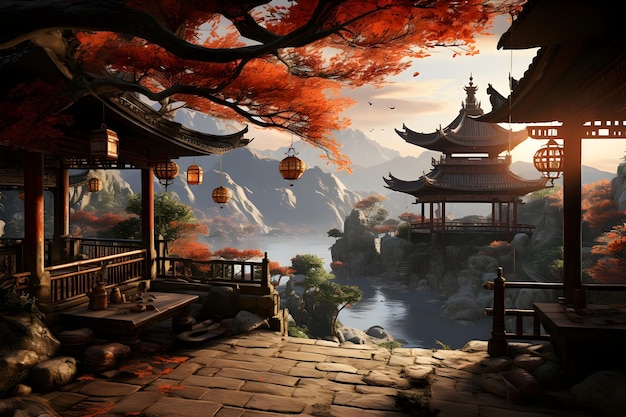
Xiangji Ping Ancient Buildings.
Prepare to immerse yourself in the captivating narrative of this ancient city, where history is not just preserved but is actively celebrated by the people who call it home. Whether you are a history enthusiast, a culture seeker, or simply a curious traveler, Xiangji Ping offers an unforgettable journey through one of China’s most storied locales.
The Rich History and Legends of Xiangji Ping Ancient Buildings
A Journey Through Time: The History and Legends of Xiangji Ping Ancient Buildings
Nestled in the heart of Pingyao, the Xiangji Ping Ancient Buildings stand as a testament to China’s rich historical tapestry. This collection of structures not only represents architectural brilliance from the Ming and Qing dynasties but also houses centuries of folklore and cultural significance.
The Historical Context
The origins of the Xiangji Ping Ancient Buildings trace back to the 14th century, coinciding with the flourishing of Pingyao as a prominent financial center during the Qing Dynasty. The buildings are emblematic of the city’s importance in trade and commerce, serving as a backdrop for thriving merchant activities. As a UNESCO World Heritage Site, Pingyao is celebrated for its remarkable preservation, allowing visitors to step back in time and experience the architectural style and urban layout of bygone eras.
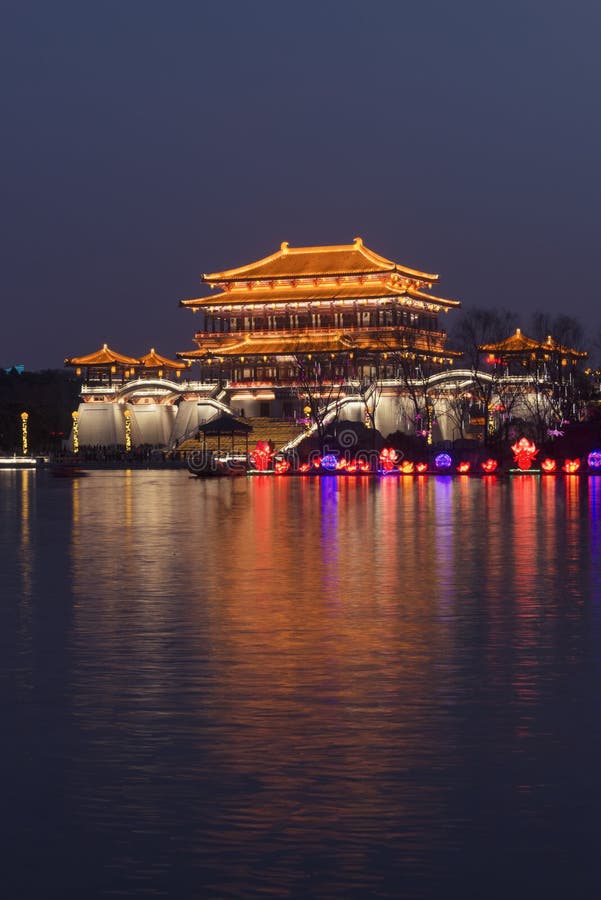
Xiangji Ping Ancient Buildings.
Architectural Significance
Xiangji Ping is characterized by its traditional brick courtyard houses, intricate wooden carvings, and stunning murals that reflect the high artistic standards of the time. The use of local materials, coupled with age-old construction techniques, has endowed these buildings with a unique charm that captivates architectural enthusiasts and casual visitors alike. Each structure tells a story, from the Confucian Temple, where scholars once gathered, to the Ancient County Government Building, which served as a local administration hub.
Legends and Cultural Heritage
Beyond their architectural beauty, the buildings of Xiangji Ping are steeped in legends that enhance their allure. One popular tale speaks of the City God, a protective deity believed to guard the city and its inhabitants. Visitors to the Temple of the City God often engage in rituals, burning incense and offering prayers, hoping to garner blessings for prosperity and protection.
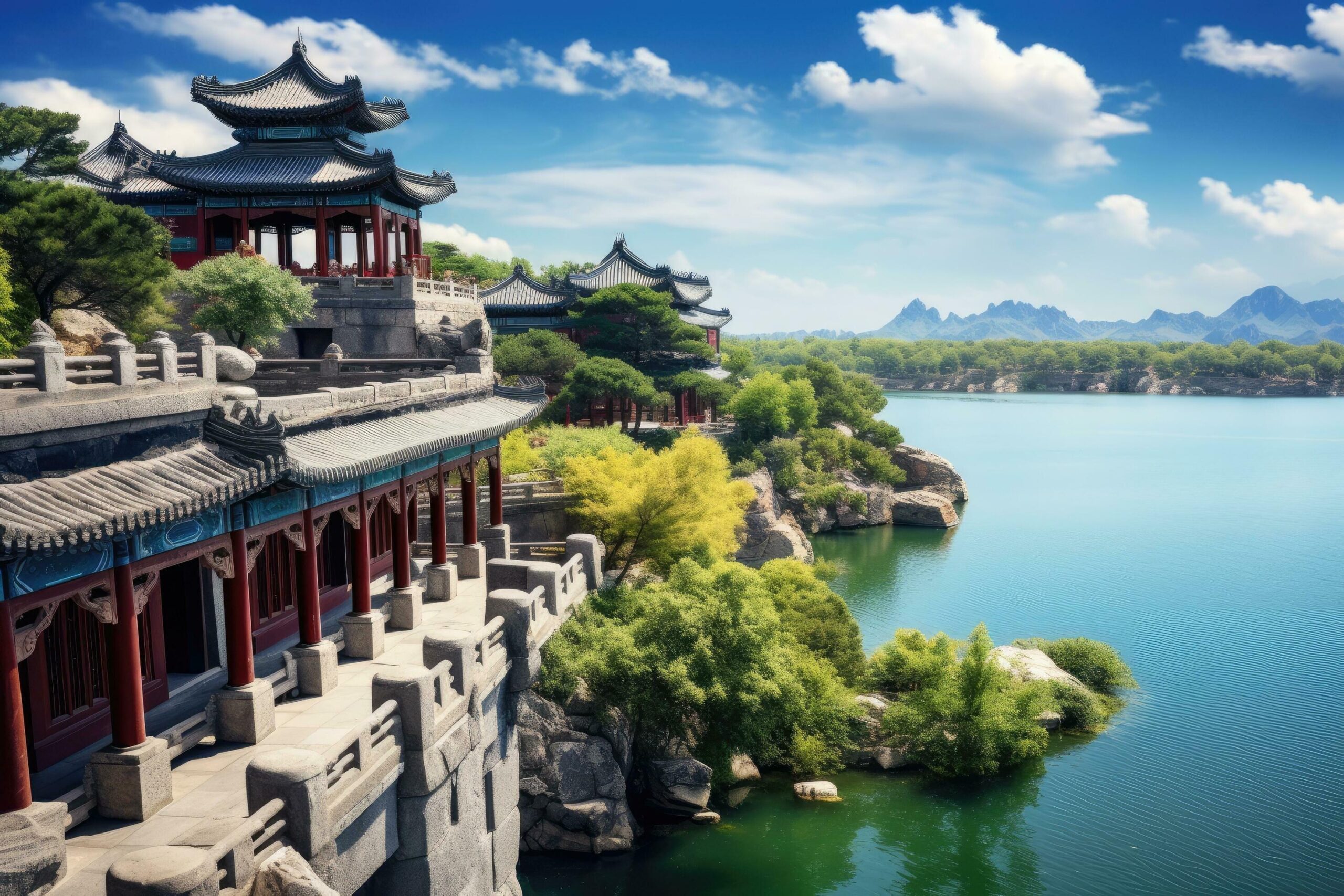
Xiangji Ping Ancient Buildings.
Another fascinating legend involves the Rishengchang Draft Bank, hailed as China’s first draft bank. It is said that the bank’s founders, through their ingenuity, revolutionized the way merchants conducted business, enabling the seamless transfer of wealth across vast distances. This innovation not only boosted the local economy but also contributed to the prosperity of Pingyao during the Qing Dynasty.
The Cultural Experience
Exploring the Xiangji Ping Ancient Buildings is more than just a visual feast; it’s an immersive experience into the lifestyle of past generations. As you wander through narrow alleys and traditional courtyards, the air resonates with the echoes of merchants haggling and scholars debating philosophical ideas.
Mingqing Street, one of the main thoroughfares, offers a vibrant atmosphere where ancient architecture meets modern commerce. Lined with shops, cafes, and eateries, it provides a unique opportunity to savor local delicacies and purchase handcrafted souvenirs while absorbing the historical ambiance.
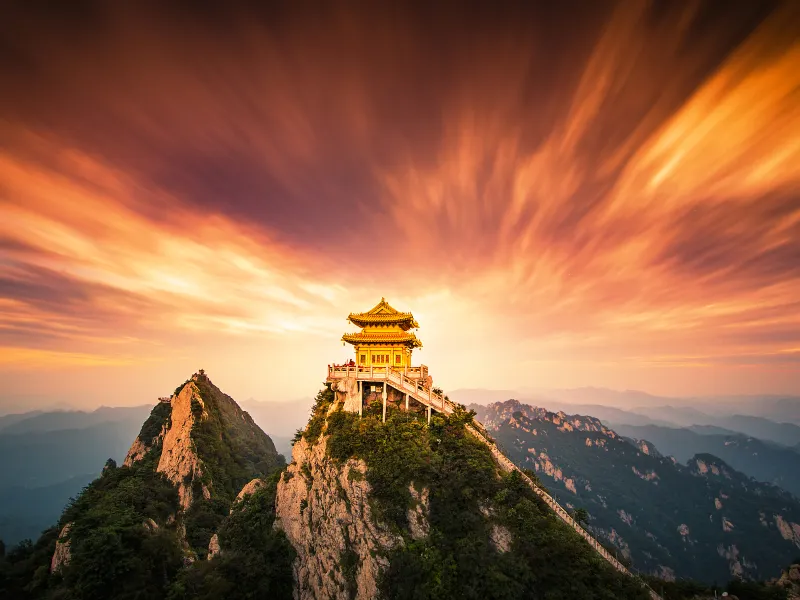
Xiangji Ping Ancient Buildings.
Conclusion
The Xiangji Ping Ancient Buildings are not merely relics of the past; they are living entities that breathe life into the stories of Pingyao’s illustrious history. For international travelers, this site is an invitation to delve deeper into the cultural riches of China, unearthing tales of resilience, innovation, and spirituality that continue to resonate through the ages. Whether you’re an avid historian or a curious adventurer, the wonders of Xiangji Ping await your discovery.
Main Highlights: What You Absolutely Can’t Miss
Discover the Timeless Wonders of Xiangji Ping Ancient Buildings
Xiangji Ping Ancient Buildings, nestled within the historic Pingyao Ancient City, is a treasure trove for travelers keen on exploring Chinese history and culture. With its well-preserved architecture and rich heritage, this UNESCO World Heritage Site offers a glimpse into the lives of those who thrived during the Ming and Qing dynasties. Here’s a detailed guide to the main highlights that you absolutely can’t miss during your visit.
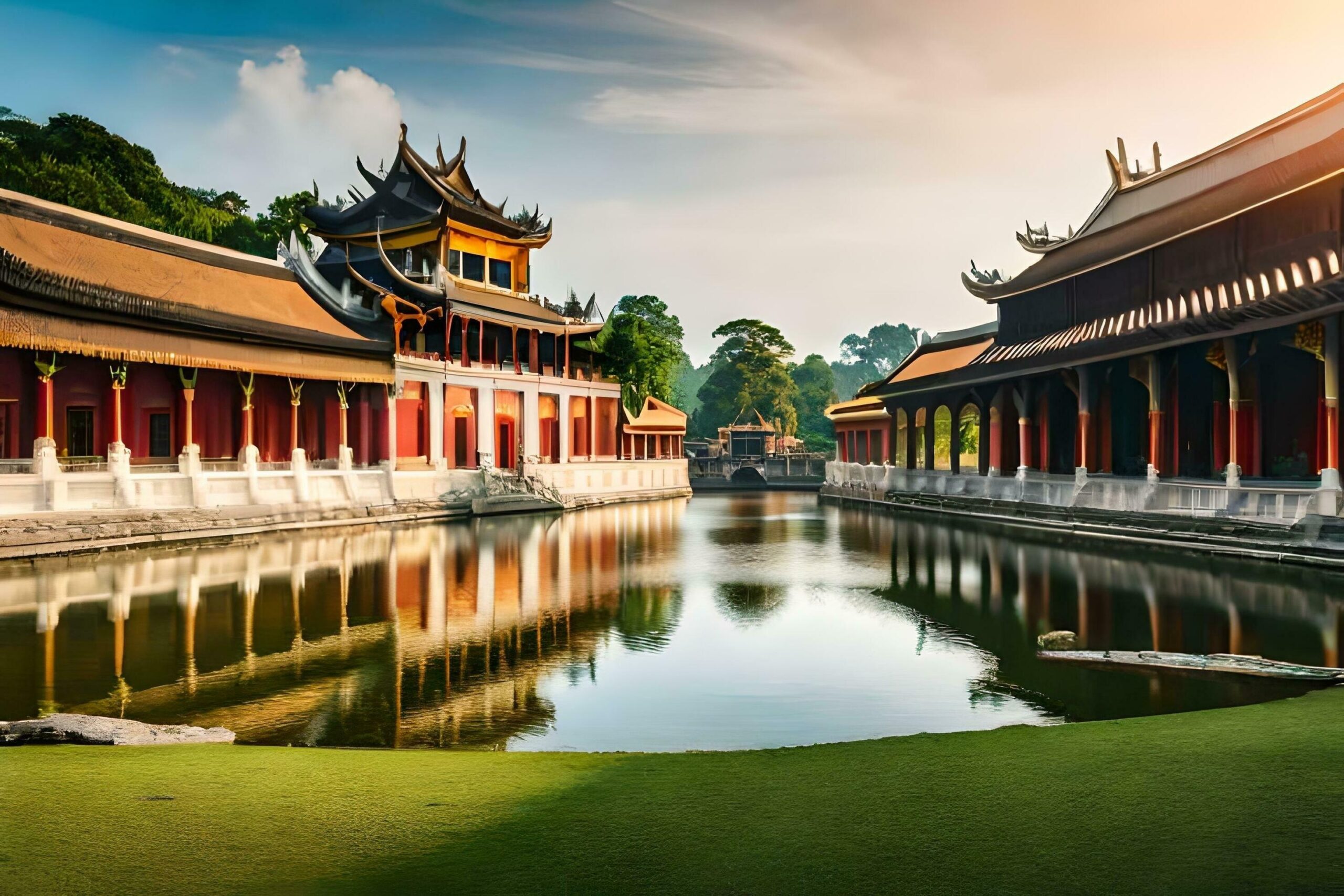
Xiangji Ping Ancient Buildings.
1. The Ancient City Wall
One of the most striking features of Pingyao is its formidable city wall, standing at about 40 feet high and stretching around the ancient town. Constructed from compacted earth and adorned with bricks and stones, this wall is not just a defensive structure but a symbol of longevity, resembling a turtle—a revered creature in Chinese culture. Walking atop the wall provides a serene vantage point for panoramic views of the city, where you can appreciate the intricate layout of the ancient streets below.
2. Mingqing Pedestrian Street
This bustling thoroughfare is the heart of Pingyao’s social life. Lined with charming shops, local eateries, and cozy cafes, Mingqing Street buzzes with activity, especially in the evenings. Here, you can indulge in local delicacies, shop for unique souvenirs, and immerse yourself in the vibrant atmosphere. Don’t forget to capture the quintessential photo of the picturesque City Tower that stands proudly at the center of the street.
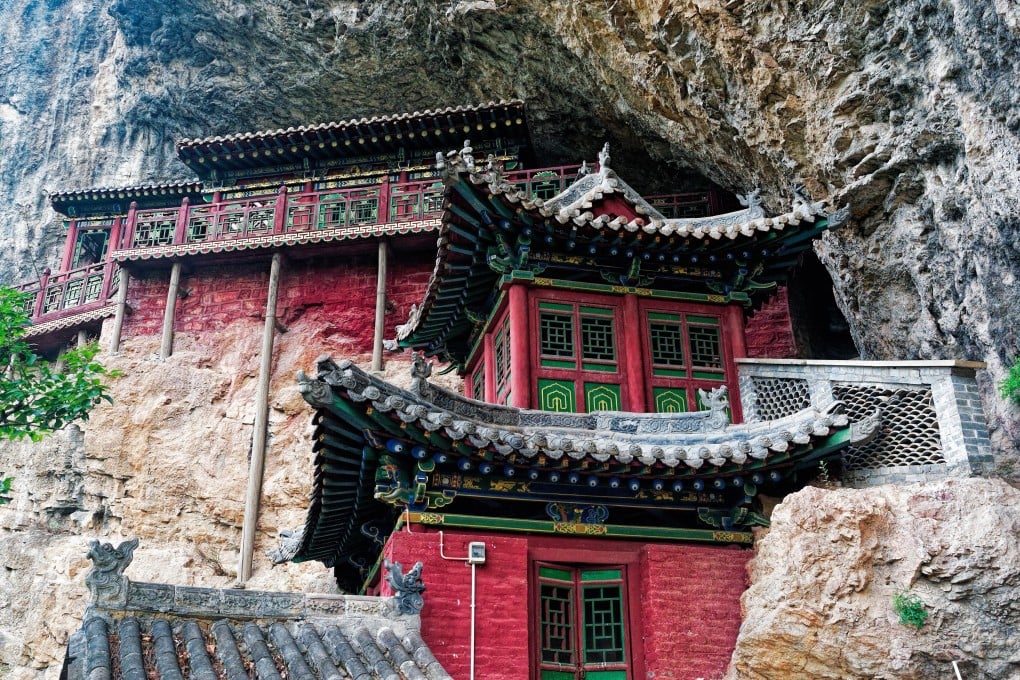
Xiangji Ping Ancient Buildings.
3. Confucian Temple
A visit to the Confucian Temple is essential for anyone interested in China’s educational history. Originally built in the 7th century and beautifully reconstructed in 1163, this tranquil temple was once a school where students prepared for rigorous imperial examinations. Stroll through its serene gardens, admire the elegant architecture, and glimpse the ancient desks where scholars once sat.
4. Ancient County Government Building
This impressive structure, dating back to the Northern Wei Dynasty, is a vital part of Pingyao’s history. The government building, which spans over 26,000 square meters, offers insights into the local administration of feudal China. Here, you can witness reenactments of court cases, providing a fascinating glimpse into the judicial procedures of the past.
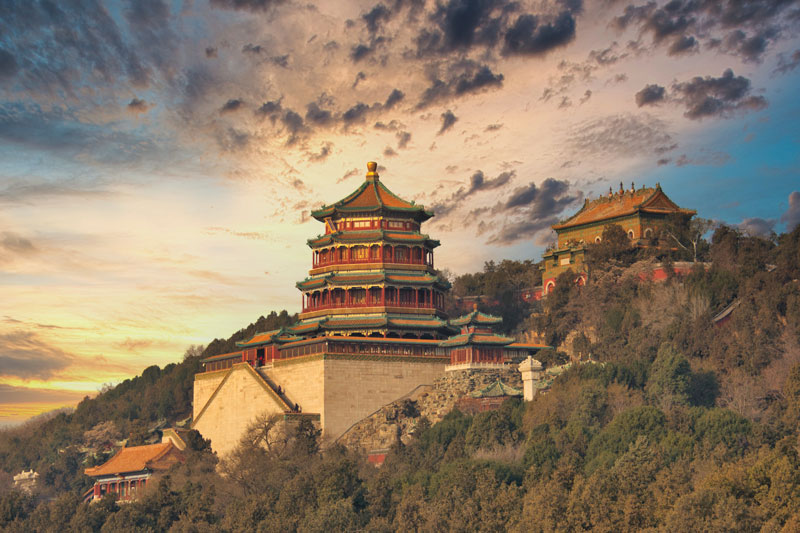
Xiangji Ping Ancient Buildings.
5. Rishengchang Draft Bank
Step into the past at Rishengchang, China’s first draft bank, established in 1823. This historical institution revolutionized financial transactions by allowing traders to transfer money securely across distances. Though small, its significance in Chinese banking history makes it a must-visit. Explore the exhibits that detail its operations and the impact it had on the economy during the Qing Dynasty.
6. Temple of the City God
Immerse yourself in the spiritual heart of Pingyao at the Temple of the City God. This well-preserved Taoist temple is vibrant with local worshippers who come to burn incense and offer prayers. The colorful architecture and serene ambiance make it a perfect spot for reflection amidst your explorations.

Xiangji Ping Ancient Buildings.
7. Qingxu Taoist Temple
Now home to the Pingyao Museum, the Qingxu Taoist Temple was once a place of study and meditation for scholars. The museum showcases the region’s Taoist civilization and the rich history of Pingyao, featuring valuable cultural relics that narrate the story of this ancient town.
Practical Tips for Your Visit
- Entrance Fee: A combo ticket costing 125 RMB grants access to various historic sites within the ancient city and is valid for three days.
- Best Time to Visit: Early mornings are ideal for a peaceful stroll through the narrow streets before the crowds arrive.
- Getting There: Pingyao Ancient City is conveniently located about 9 km from the bullet train station, with many hotels offering free pick-up services.
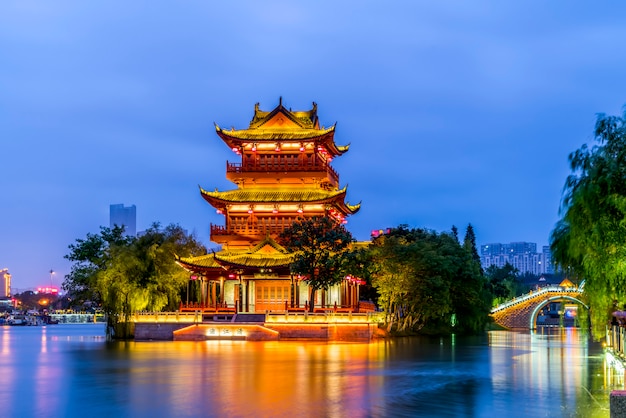
Xiangji Ping Ancient Buildings.
As you wander through the captivating alleys of Xiangji Ping Ancient Buildings, you’ll find yourself transported back in time, enveloped by the charm and history of one of China’s best-preserved ancient towns. Each landmark tells a story, inviting you to delve deeper into the rich tapestry of Chinese culture and tradition. Don’t miss this enchanting experience!
Planning Your Visit: A Practical Guide
Your Essential Guide to Visiting Xiangji Ping Ancient Buildings
Exploring the Xiangji Ping Ancient Buildings (象集壁画、石刻) offers a captivating journey into the heart of Chinese history and culture. This guide provides practical tips to ensure your visit is both enjoyable and enriching.
Getting There
Location: The Xiangji Ping Ancient Buildings are situated in the historic Pingyao Ancient City, which is a UNESCO World Heritage Site. This ancient town is approximately 9 kilometers from the Pingyao bullet train station.

Xiangji Ping Ancient Buildings.
Transportation: The best way to reach the site is by local taxi or shuttle service from your accommodation. Many guesthouses within Pingyao offer complimentary pickup and drop-off services for guests.
Opening Hours and Admission
- Opening Hours: Daily from 8:00 AM to 5:30 PM
- Admission Fee: A combo ticket costing 125 RMB grants you access to various historic buildings within the ancient city. The ticket is valid for three days, allowing you to explore at your leisure, with the caveat that each site can only be visited once.
Where to Stay
Staying within the ancient city enhances your experience. Choose from a variety of charming guesthouses that reflect the traditional architecture of the Ming and Qing dynasties. Early mornings are particularly serene, offering a unique glimpse into local life before the crowds arrive.
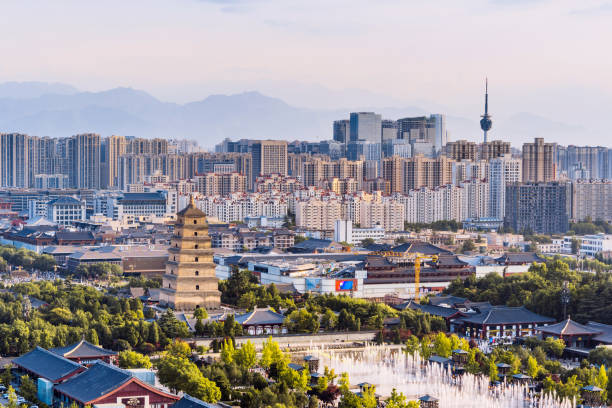
Xiangji Ping Ancient Buildings.
Exploring the Ancient City
Pingyao’s narrow lanes are a treasure trove of history. Here are some must-visit highlights:
-
City Wall: Walk along one of China’s best-preserved city walls, which offers stunning views of the ancient town. The south gate, resembling a turtle, is particularly impressive and should not be missed.
-
Mingqing Street: This lively thoroughfare is lined with shops, eateries, and bars. It’s a great spot for local delicacies and people-watching, especially in the evening when the street comes alive.
-
Confucian Temple: A peaceful oasis, this temple dates back to the 7th century and showcases beautiful gardens and historical architecture.
-
Ancient County Government Building: Step back in time in this vast complex that once served as a local administrative center. Live reenactments of ancient court cases offer a fascinating insight into past judicial processes.
-
Rishengchang Draft Bank: Discover the history of China’s first draft bank, which revolutionized the banking system during the Qing Dynasty.
-
Temple of the City God: Visit this well-preserved Taoist temple, where locals frequently come to pray and burn incense.
Cultural Tips
-
Etiquette: When exploring religious sites, be respectful of local customs. Dress modestly and observe any signage regarding photography.
-
Language: While English is spoken in some tourist areas, learning a few basic Mandarin phrases can enhance your interactions with locals.
-
Cash: Although digital payments are widely accepted, carrying some cash (RMB) is advisable for smaller shops and street vendors.
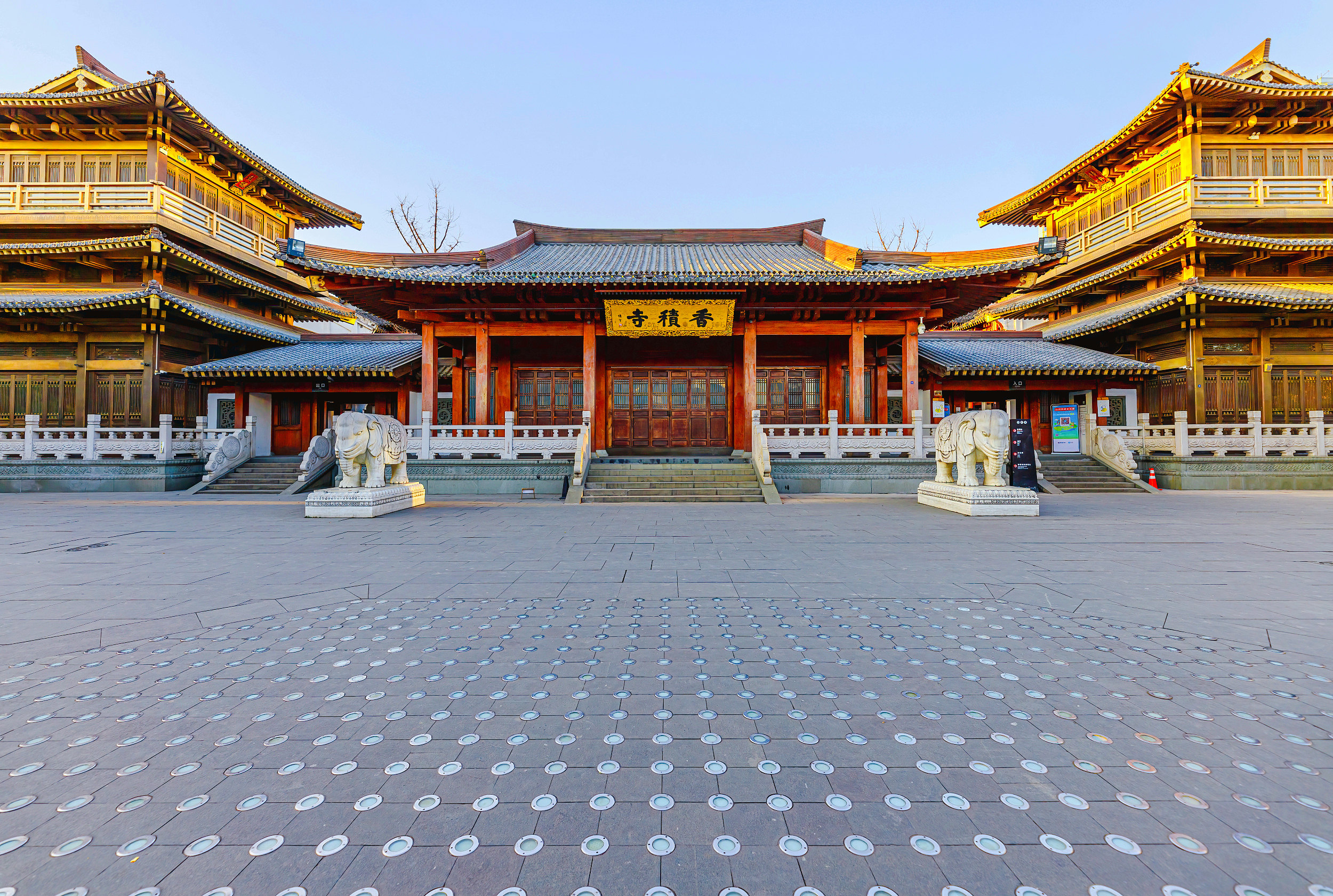
Xiangji Ping Ancient Buildings.
Suggested Itinerary
For a fulfilling experience, consider allocating 1-1.5 days to explore Pingyao Ancient City:
-
Day 1: Arrive in the morning, visit the City Wall and stroll along Mingqing Street. Enjoy local cuisine for lunch, followed by visits to the Confucian Temple and Ancient County Government Building.
-
Day 2: Dedicate your time to the Rishengchang Draft Bank, Temple of the City God, and perhaps a leisurely morning at a local café before exploring hidden corners of the ancient city.
Final Thoughts
The Xiangji Ping Ancient Buildings and the surrounding historical sites provide a unique lens through which to experience China’s rich tapestry of traditions, architecture, and culture. Embrace the journey, take your time, and immerse yourself in the beauty of this ancient city. Your adventure awaits!
Tickets: Prices, Booking, and Tips
When planning your visit to Xiangji Ping Ancient Buildings, understanding the ticketing system and how to make the most of your experience is essential. Here’s everything you need to know to ensure a smooth and enriching visit.
Entrance Fees
- General Admission: The entrance fee for Xiangji Ping Ancient Buildings is 125 RMB (approximately $18 USD). This ticket grants you access to the various historic sites within the complex.
- Validity: Your ticket is valid for three days, allowing ample time to explore the sites at your own pace. However, each ticketed site can only be visited once, so plan your itinerary accordingly.
Booking Tips
- Advance Purchase: It’s advisable to purchase your tickets in advance, especially during peak tourist seasons. This can often be done online through authorized ticketing websites or local travel agencies.
- On-Site Purchase: Tickets can also be purchased at the entrance. However, be prepared for potential queues, particularly during weekends and holidays.
- Keep Your Ticket Handy: You will need to present your ticket at each site, so ensure you keep it safe throughout your visit.
Recommended Visiting Schedule
Given the rich history and numerous sites within Xiangji Ping Ancient Buildings, allocating 1 to 1.5 days for your exploration is ideal. Here’s a suggested itinerary:
- Day 1:
- Morning: Visit the Confucian Temple and Ancient County Government Building.
- Afternoon: Explore the Rishengchang Draft Bank and Temple of the City God.
-
Evening: Stroll along Mingqing Pedestrian Street, enjoying local delicacies and shopping.
-
Day 2 (if time permits):
- Morning: Visit Qingxu Taoist Temple and enjoy the exhibits at the Pingyao Museum.
- Afternoon: Walk along the ancient city wall for panoramic views of Pingyao.
Additional Tips
- Stay Within the Ancient City: Consider booking accommodation within the ancient city to fully immerse yourself in the atmosphere. Many guesthouses offer complimentary pickup services from the nearby train station.
- Explore Early: To experience the city with fewer tourists and witness local life, begin your day early. Morning hours provide a quieter and more tranquil environment for exploration.
- Photography: Don’t forget your camera! The ancient architecture and vibrant streets are a photographer’s dream, especially during the golden hours of early morning and late afternoon.
Conclusion
With its rich cultural heritage and fascinating architecture, Xiangji Ping Ancient Buildings is a must-visit destination for anyone interested in Chinese history. By understanding the ticketing process and planning your visit wisely, you can ensure an unforgettable experience steeped in the stories of the past. Enjoy your journey through history!
How to Get There: A Complete Transportation Guide
Getting to Xiangji Ping Ancient Buildings
Visiting the Xiangji Ping Ancient Buildings, renowned for their stunning murals and intricate stone carvings, is a journey that takes you deep into the heart of Chinese history and culture. Here’s your complete guide on how to reach this remarkable site.
By Air
Nearest Airport: Taiyuan Wusu International Airport (TYN)
Taiyuan Wusu International Airport is the closest major airport to Pingyao. Located approximately 100 kilometers (62 miles) away, it serves both domestic and some international flights.
- From the Airport to Pingyao:
- Taxi: The most convenient option. A taxi ride will take about 1.5 hours and will cost around 300-400 RMB.
- Airport Shuttle: Look for shuttle services that connect to Pingyao, though they may be less frequent.
By Train
Pingyao Railway Station
Pingyao is well-connected by high-speed trains, making it accessible from major cities like Beijing, Xi’an, and Shanghai.
- From Beijing:
- Travel Time: Approximately 4-5 hours on a bullet train.
-
Frequency: Several trains operate daily.
-
From Xi’an:
- Travel Time: About 3-4 hours.
-
Frequency: Regular trains available.
-
From Shanghai:
- Travel Time: Approximately 8-10 hours (a longer journey but manageable with overnight trains).
Arriving at Pingyao Railway Station:
– Once you arrive at Pingyao Railway Station, you can take a taxi, public bus, or book a private transfer to the ancient city, which is about 9 kilometers (5.6 miles) away.
By Bus
Long-distance buses operate from various cities to Pingyao, including Taiyuan, Datong, and other nearby towns. Bus travel may take longer compared to trains but can be a more economical option.
- From Taiyuan:
- Travel Time: About 2-3 hours.
-
Cost: Approximately 50-80 RMB.
-
From Datong:
- Travel Time: Roughly 4-5 hours.
- Cost: About 100-150 RMB.
Buses will drop you off at the Pingyao Bus Station, from which you can take a short taxi or local transport to the ancient city.
Local Transportation in Pingyao
Once you arrive in Pingyao, the ancient city is predominantly pedestrian-friendly, allowing you to explore its narrow streets, traditional architecture, and vibrant local culture on foot.
-
Walking: The best way to soak in the atmosphere is by strolling through the cobbled streets of the ancient town.
-
Bicycles: You can rent bicycles from various shops if you prefer a quicker way to explore.
-
Taxis: Local taxis are available but may not be able to enter some parts of the ancient city, so plan your routes accordingly.
Accommodation Transfers
Many guesthouses and hotels in the ancient city offer complimentary pick-up services from Pingyao Railway Station or Bus Station if you book your stay with them. It’s worth checking in advance to ease your arrival.
Tips for Your Journey
-
Language: While some signs are in English, learning a few basic Mandarin phrases can enhance your experience and interactions with locals.
-
Cash: Keep some cash on hand for smaller purchases, as not all places accept credit cards.
-
Ticketing: Remember to purchase a combo ticket for the ancient city, which allows access to various historical sites within the area. This ticket is valid for three days, giving you ample time to explore without rushing.
Setting foot in Xiangji Ping Ancient Buildings is not just a visit; it is stepping back in time. With this guide, you can navigate your journey with ease and immerse yourself in the rich tapestry of Chinese history and culture. Safe travels!
Local Cuisine and Accommodation Nearby
When visiting the enchanting Xiangji Ping Ancient Buildings, immersing yourself in the local cuisine and finding the perfect place to rest is essential for a wholesome experience. This historic area, with its rich cultural tapestry, offers travelers a delightful array of culinary delights and charming accommodations, ensuring your stay is both memorable and comfortable.
Savoring the Local Cuisine
The culinary scene surrounding Xiangji Ping Ancient Buildings is a feast for the senses, showcasing traditional flavors that reflect the region’s history and culture. Here are some must-try dishes and dining spots:
-
Pingyao Beef (平遥牛肉): Renowned for its unique flavor and preservation methods, this delicacy is a must-try. Look for local restaurants that serve it either as dry-cured slices or in hearty stews.
-
Jiaozi (饺子): These Chinese dumplings, often filled with minced meat and vegetables, are a staple. Many eateries offer handmade versions that you can enjoy boiled, steamed, or fried.
-
Pingyao Noodles (平遥刀削面): Experience the local twist on hand-cut noodles, typically served in a savory broth with various toppings. Street vendors and small restaurants are excellent places to indulge in this comforting dish.
-
Fried Tofu (炸豆腐): Crispy on the outside and soft on the inside, this popular snack is often served with a spicy dipping sauce. It’s perfect for a quick bite while exploring the ancient city.
-
Local Snacks: Don’t miss out on sampling various street food options, from sweet rice cakes to savory pancakes. Mingqing Street is lined with stalls where you can grab a quick snack and soak in the vibrant atmosphere.
Dining Spots to Consider
-
Rishengchang Restaurant: Nestled near the famous Rishengchang Draft Bank, this establishment serves authentic Pingyao dishes in a traditional setting. The decor reflects the ancient banking history, making it a culturally rich dining experience.
-
Mingqing Street Eateries: As the bustling heart of the ancient city, this street boasts numerous restaurants and food stalls. Here, you can find everything from local specialties to international cuisine, catering to diverse tastes.
-
Taoist Tea House: For a more tranquil experience, visit this tea house where you can enjoy local teas alongside light snacks. Relax in a serene environment that embodies the spirit of traditional Chinese culture.
Comfortable Accommodations
Staying within the ancient city offers not just convenience, but also a chance to experience the charm of historic architecture. Here are a few accommodation options that will enhance your visit:
-
Pingyao Yamen Hostel: This cozy hostel is situated in a traditional courtyard house, providing an authentic feel of living in ancient Pingyao. It’s budget-friendly, with comfortable rooms and a welcoming atmosphere.
-
Jinglun Hotel: A beautiful hotel that combines modern amenities with traditional architecture. Located within walking distance of major attractions, it offers a peaceful retreat after a day of exploration.
-
Harmony Hotel: A boutique hotel that boasts exquisite decor and attentive service. Each room is designed with traditional elements, ensuring you feel immersed in the local culture during your stay.
-
Liu’s Homestay: Experience true local hospitality in this family-run homestay. With home-cooked meals and personalized service, it’s an excellent way to connect with local life while enjoying comfortable accommodations.
Conclusion
Your visit to Xiangji Ping Ancient Buildings will be enriched by the local flavors and the warmth of nearby accommodations. Whether you are savoring the delicious beef, exploring the bustling streets of Pingyao, or resting in a charming hotel, each moment will deepen your appreciation for this remarkable historical site. Embrace the culture, taste the authenticity, and create lasting memories in this captivating part of China.
Frequently Asked Questions
Frequently Asked Questions
1. What is Xiangji Ping Ancient Buildings?
Xiangji Ping Ancient Buildings, located within the historic Pingyao Ancient City, features a collection of well-preserved structures, including traditional residences, temples, and government buildings dating back to the Ming and Qing dynasties. This area is a UNESCO World Heritage Site, showcasing architectural styles and cultural traditions from China’s rich history.
2. How do I get to Xiangji Ping Ancient Buildings?
Pingyao Ancient City is approximately 9 km from the Pingyao bullet train station. Many hotels within the ancient city offer complimentary pickup and drop-off services for their guests. If you prefer public transport, taxis and local buses are also available.
3. What are the opening hours and ticket prices?
The Xiangji Ping Ancient Buildings are open daily from 8:00 AM to 5:30 PM. Entrance tickets cost 125 RMB, which grant access to multiple historic sites within the ancient city over three days. Remember to keep your ticket handy, as it will be required for entry into each site.
4. Is it possible to explore the area on foot?
Absolutely! The old city is primarily pedestrianized, making it easy to wander through narrow alleys, visit shops, and enjoy local cuisine on foot. This is one of the best ways to experience the charm and atmosphere of Pingyao.
5. What are the must-see buildings within Xiangji Ping Ancient Buildings?
While exploring, be sure to visit the Confucian Temple, Rishengchang Draft Bank, Ancient County Government Building, and the Temple of the City God. Each of these sites offers unique insights into the historical and cultural fabric of Pingyao.
6. Are there accommodations available near Xiangji Ping Ancient Buildings?
Yes, there are numerous guesthouses and hotels located within the ancient city that cater to various budgets. Staying within the ancient city allows you to experience the local culture and explore the area early in the morning when it is less crowded.
7. What is the best time to visit Xiangji Ping Ancient Buildings?
The best times to visit are during the spring (April to June) and autumn (September to November) when the weather is mild and pleasant. Additionally, early mornings are recommended for a quieter experience, allowing you to enjoy the peaceful ambiance and observe local life.
8. Are there guided tours available?
Yes, several guided tours are available that focus on the history and culture of Pingyao. Options include half-day walking tours, full-day excursions, and multi-day packages that explore the broader region. These tours often provide valuable context and stories that enhance your visit to Xiangji Ping Ancient Buildings.
Final Thoughts on Your Trip
As you prepare to leave the enchanting Xiangji Ping Ancient Buildings, take a moment to reflect on the timeless stories etched within its walls and the vibrant tapestry of culture that surrounds you. This ancient town, with its rich historical significance and stunning architecture, offers a unique glimpse into the past, allowing you to connect with centuries of Chinese civilization.
Embrace the Journey
Your exploration of Xiangji Ping has not only been a journey through physical space but also a voyage through time. From the bustling Mingqing Street to the tranquil gardens of the Confucian Temple, the ancient city invites you to engage with its history on a personal level. Every alleyway and courtyard whispers tales of merchants, scholars, and artisans who helped shape this remarkable place.
Take Home Memories
As you depart, consider these highlights to cherish:
- Historical Insight: The ancient buildings and temples are not just structures; they are relics of a vibrant past that shaped modern Chinese culture.
- Cultural Experiences: Engage with locals, savor traditional cuisine, and participate in the rituals that continue to breathe life into this historic city.
- Stunning Scenery: Capture the breathtaking views from the ancient city wall, providing a picturesque backdrop that will forever be etched in your mind.
A Lasting Impression
Pingyao Ancient City leaves an indelible mark on every traveler fortunate enough to walk its streets. The blend of ancient and living culture, coupled with the warmth of its residents, creates a welcoming atmosphere that invites reflection and appreciation. Whether you’ve come to delve into its history or simply to enjoy its beauty, the memories forged here will resonate long after you’ve returned home.
As you close this chapter of your travels, carry forward the spirit of Xiangji Ping—a testament to resilience, culture, and the enduring legacy of a storied past. Until your next adventure, may the echoes of this ancient city continue to inspire your journey through life.